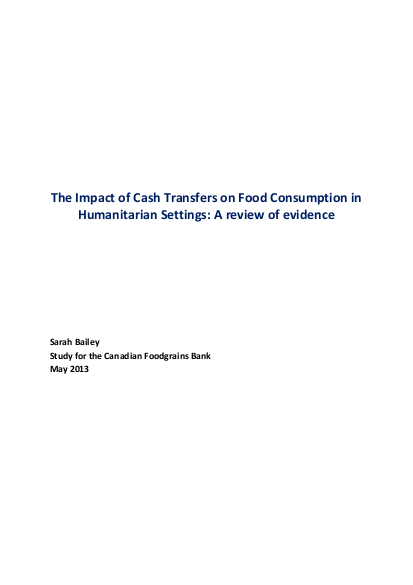
This study examines evidence on how interventions using cash and vouchers affect food consumption. It does this by reviewing studies, pilots and evaluations that compare the effectiveness of cash, vouchers and food aid, as well as evaluations of programmes using cash and vouchers that do not draw comparisons between different food assistance transfers. It focuses on humanitarian contexts but also briefly examines findings on the impact of longer-term cash transfer programmes on food consumption in development contexts, which have been subject to extensive research.
This paper draws from and builds upon The Impact of Cash Transfers on Nutrition in Emergency and Transitional Contexts: A review of evidence (Bailey and Hedlund, 2012), which examines evidence on the impact of cash transfers on nutrition, including on dietary intake. This paper is based on a review of 43 evaluations and reports on humanitarian programmes since 2006. Of these, 18 drew direct or indirect comparisons between different types of transfers, while 25 examined cash or vouchers alone (i.e. no comparisons with food aid). Only studies with analysis related to food consumption were included. It should be kept in mind that most evaluations of humanitarian assistance are not rigorous by academic research standards and are done with limited time and resources. Literature on cash transfer programmes was obtained via web searches, the Cash Learning Partnership (CaLP) D-Group2, the CaLP web library and correspondence with aid agencies and think tanks. The paper also relies on evaluations that have been used in previous reviews of emergency cash transfer programming (e.g. Bailey and Hedlund, 2012; Harvey and Bailey, 2011).
The paper is structured as follows. Section 2 provides background information on the evolution of cash and vouchers in general and as food assistance tools. Section 3 examines evidence on food consumption from studies and evaluations that compare cash, vouchers and / or food aid. Evidence from interventions using only cash or vouchers is explored in Section 4, along with findings from longer-term cash transfer programmes. Section 5 provides conclusions.